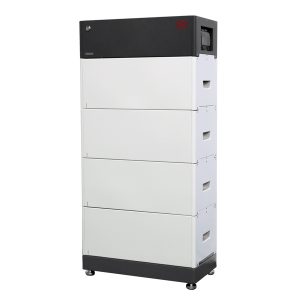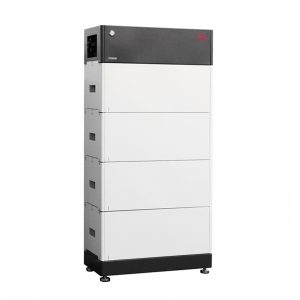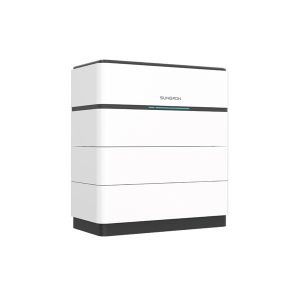Up to today, a standard reference for evaluating the parameters of a storage system was impossible.
In fact, we could not compare key features, such as the duration, efficiency, the possibility of recycling, etc…
A comparison will be possible
This was due to the fact that producers themselves chose the way to declare the characteristics of their products.
This applies both to stationary batteries (accumulators) and to those used in the electric vehicle (EV) sector.
Today, however, through the Joint Research Center (JRC), we are approaching the establishment of common standards, starting with the sector of batteries for electric vehicles. This is possible also thanks to the boost of the European Commission.
Some parameters subject to standardisation
The are various parameters subject of the standardization. Only the most significant are indicated below:
» Capacity of a battery
An essential parameter to consider when comparing different types of batteries it the total electric Charge involved in the electrochemical reaction. The c-rate is commonly used as a parameter.
Meaning the multiple of the capacity that can be discharged in an hour (for example 1c for a 10ah Battery means that it is possible to obtain a current of 10a for one hour).
» Capacity to keep the charge
It expresses the charge loss of the battery when it is has not been used for a long period of time.
The situation may determine the real functioning of a parked car, or the accumulation of the battery of a storage system in the warehouse.
» Energy efficiency
Energy efficiency is defined as the ratio between the net energy developed by the battery during a discharge test and the total energy required to return to the initial charge level.
The conditions to to which it is important specify the test are the actual object of the standardization that we are trying to operate. For example, these may involve the indication of the power profile during the test, the initial charge status, the temperature, etc …
» Duration of the battery
Surely another crucial point of research and standardization is the life of the batteries, which plays a significant role, that also connects with safety. The performance of a battery is reduced both by the use and by aging, which are influenced in turn by various factors such as temperature, current, operating voltage limits and thermal management.
All these parameters, together with others that have not been named (such as nominal power, peak power, etc.), are considered in the process of unification and standardization. They are still in progress and will then constitute the measure to evaluate batteries in an effective way.
According to European waste legislation, maximum attention must be paid to preventing the production of waste.
The concepts of:
» re-use,
» reconversion,
» recycling,
» at the end disposal.
-
BYD, Storage Battery
BYD: Battery-Box Premium HVS / HVM – high voltage – from 5.1 to 66.2 kWh
The new high voltage batteries of the BYD brand are devices compatible with many single-phase and three-phase inverter brands.
BATTERY-BOX PREMIUM HVS
- composed of 2 to 5 HVS battery modules
- capacity of 5.1 to 12.8 kWh
BATTERY-BOX PREMIUM HVM
- composed of 3 to 8 HVM battery modules
- capacity of 8.3 to 22.1 kWh
SKU: n/a -
BYD, Storage Battery
BYD: Battery-Box Premium LVS – low voltage – from 3.8 kWh to 245.8 kWh
BYD Battery-Box Premium LVS low voltage battery (48V) to be combined with various three-phase and single-phase inverters.
- Scalable from 4 kWh to 246 kWh
- Maximum Flexibility for any application with up to 64 Modules connected in parallel
- Capable of High-Powered Emergency-Backup and Off-Grid Function
- Patented Internal Plug Design Requires No Additional Wiring
SKU: n/a -
Huawei, Storage Battery
Huawei LUNA2000 – smart string battery – 5/10/15 kWh
Lithium batteries for photovoltaic storage. Modular system with 5 kWh stackable battery packs with 100% discharge capacity.
- Modular design of 5kWh, 10 kWh and 15 kWh and parallelable up to 2 systems for a total of 30 kWh
- 10 year guarantee
- Configurable with Huawei Hybrid Single and Three Phase Inverters
SKU: n/a -
Huawei, Storage Battery
Huawei LUNA2000-7/14/21-S1
Storage system with 6.9 kWh LFP cells, modular solution with the possibility of stacking up to three battery packs per tower with a maximum capacity of 20.7 kWh parallelable up to 4 towers for a total of 82.8 kWh.
Huawei inverter compatible batteries:
- SUN2000-12/15/17/20/25K-MB0
- SUN2000-3/4/5/6/8/10KTL-M1
- SUN2000-2/3/3.68/4/4.6/5/6KTL-L1
SKU: n/a -
Jinko Solar, Storage Battery
Jinko Solar: Sungiga – all-in-one cabinet for C&I applications
The Sungiga JKS-215KLAA-100PLAA is an all-in-one energy storage solution which packs battery modules, BMS, PCS, fire suppression systems and liquid cooling in a single cabinet.
- Capacity: 215 kWh
- Charge/discharge power: 100 kW
- Liquid cooling
- Integrated fire suppression system
- IP 55
- Cloud-based monitoring
SKU: n/a -
LG Energy Solution, Storage Battery
LG Energy Solution PRIME – high voltage – 10H/16H
LG PRIME offers maximum safety for electricity consumption regardless of external uncertainties, achieving energy independence through the conservation of self-produced and eco-friendly solar energy.
- It works in temperatures ranging from -10°C to 50°C, so it is suitable for any type of weather conditions.
- The installation can be done both on the wall and on the floor.
- Available sizes: PRIME 10H, PRIME 16H.
SKU: n/a -
LG Energy Solution, Storage Battery
LG Energy Solution RESU – low voltage – 6.5/10/12
LG Energy Solution with RESU battery packs 48 V provides the most advanced solution in the market with regard to lithium-ion view the best energy density, high quality and reliability.
Three levels of basic skills from 6.5 kWh, 9.8 kWh and 13.1 kWh with expandability up to 26,2 kWh.
- Compact size and easy installation
- Better energy density in the world
- Tested safety
SKU: n/a -
LG Energy Solution, Storage Battery
LG Energy Solution RESU – high voltage – 10M
High-voltage residential battery with modular design consisting of two battery modules and a BPU (Battery Protection Unit), which make it extremely handy and easy to install.
- battery module weight 36Kg, total weight with all three parts combined 80 kg
- extremely small size: base 45cm x height 51cm and 24cm deep
- compatible with Sunny Boy Storage 3.7 inverters
- RESU10M energy 9.8 kWh
SKU: n/a -
Huawei, Storage Battery
LUNA2000 – 200KWH – 2H1
The LUNA2000-xxxKWH-xH1 is a modular C&I storage system that can be adapted to various installation scenarios.
- Capacity: 97, 129, 161 or 200 kWh
- 100 kW PCS
- Air cooling with industrial-grade air conditioning
- Integrated fire suppression system
- IP 55
SKU: n/a -
Pylontech, Storage Battery
Pylontech H48050A lithium battery HIGH voltage
The Pylontech H48050A lithium battery is the module that connected in series allows to obtain storage systems with different types of working voltages and storage capacity, depending on the application. The system consists of a control module and several battery modules.
- 4.8 kWh energy for single-phase systems and 9.6 kWh for three-phase systems
SKU: n/a -
Pylontech, Storage Battery
Pylontech RACK CABINETS
Pylontech Rack cabinets painted with polyester powder, suitable for Pylontech batteries.
- Single section cabinet painted in polyester powder, embossed finish with ventilation grilles in RAL 5011 and RAL 5021
- Adjustable feet kit for wardrobe
- Pylontech / inverter connection cables kit
- Back brackets for battery support included for cabinets from 9U to 42U
SKU: n/a -
Pylontech, Storage Battery
Pylontech US2000 lithium battery
The Pylontech US2000 lithium battery module is suitable for making small and medium capacity storage systems.
- From 2.4 kWh
- Up to 16 units without parallel module.
- Modular to create storage systems even of large dimensions.
- Soft-start mode: reduces the peak current when the inverter has to start with only one battery.
SKU: n/a -
Pylontech, Storage Battery
Pylontech US3000 – lithium technology – low voltage
Pylontech US3000 lithium batteries, 3.55 kWh modules, maximum instantaneous charge and discharge power and depth of discharge up to 95%.
- 10 year warranty
- Longer life cycle, exceeding 6000 cycles
- Internal molecular structure of LFP batteries
- Compact and modular design
- Soft-start mode : reduces the peak current when the inverter must start with only one battery
SKU: n/a -
SMA, Storage Battery
SMA Home Storage 3,28 kWh
The SMA Home Storage battery is a perfect match for SMA hybrid inverters and is suitable for the energy solutions of today and tomorrow. It is a scalable, flexible and long-lasting solution, thanks to approximately 8,000 charging cycles.
- LFP batteries
- Nominal capacity (single module): 3.28 kWh
- Stackable system (up to 5 modules in series)
- IP 65
- Weight (single module): 38 kg
- Warranty: 10 years / 8,000 cycles
SKU: n/a -
SolarEdge, Storage Battery
SolarEdge CSS-OD – All-in-One Cabinet for C&I Systems
The SolarEdge CSS-OD is the ideal solution for those looking for a compact, safe and easy-to-install storage system, capable of increasing energy self-sufficiency and reducing grid consumption. Thanks to the SolarEdge ONE EMS, it is possible to manage the stored energy in every use case.
- Total storage capacity: 102.4 kWh
- Maximum charge/discharge power: 50 kW
- Pre-configured inverter and batteries for quick installation.
- Integrated fire protection system
- IP65 protection rating
SKU: n/a -
SolarEdge, Storage Battery
SolarEdge Energy Bank – high voltage – 10 kWh
Photovoltaic energy storage batteries with Li-ion NMC technology, nominal capacity of 10.3 kWh (100% DOD, effective capacity of 9.7 kWh).
- NMC 9.7kWh / 5kW Li-ion technology
- Support up to 3 batteries per inverter for more power and capacity 100% depth of discharge
- 10 year guarantee
SKU: n/a -
-
Storage Battery, Sungrow
Sungrow SBH 100-400 – HV battery
Sungrow SBH100-400 represents a reliable and versatile energy storage solution, combining high power, advanced safety and modular flexibility.
- Single module capacity: 5 kWh
- LFP batteries
- Stackable system (up to 8 modules in parallel)
- IP55
- 10-year warranty
SKU: n/a -
Storage Battery, Sungrow
Sungrow SBR – high voltage – from 6.4 to 102 kWh
High voltage lithium iron phosphate LFP batteries, modular and expandable at any time, with 10 years warranty and parallelable up to 4 units.
- They can charge and discharge with a maximum current of 30A
- Equipped with a charge status indicator
- IP55, can be installed both indoors and outdoors
- Protection from abnormal voltages and currents
- Available sizes: SBR064 / SBR096 / SBR128 / SBR160/ SBR192 / SBR224 / SBR256
SKU: n/a -
Storage Battery, ZCS Azzurro
ZCS Azzurro HV SMART 5K
The new high voltage batteries from HV SMART 5K series are compatible with ZCS three-phase inverters and allow for high storage capacities.
- LFP battery
- Nominal capacity (single module): 5.12 kWh
- Stackable system (up to 8 modules in parallel)
- Smart Heating function
- Nominal voltage: 400 V
- Warranty: 10 years
SKU: n/a -
Storage Battery, ZCS Azzurro
ZCS Azzurro: battery H48050 – high voltage – from 2,1 to 51,8 kWh
The H48050 batteries are 2.4 kWh modules that can be used with the ZCS three-phase hybrid inverters, in combination with the SC500-H or SC1000-H BMS.
- LFP technology
- Total net capacity (single module): 2,4 kWh
- Maximum charge and discharge current: 25 A
- Module weight: 24 kg
- 10-year warranty
SKU: n/a -
Storage Battery, ZCS Azzurro
ZCS Azzurro: HV ZBT 5K – high voltage – from 5.12 kWh to 20.48 kWh
The high voltage batteries of the HV ZBT 5K series constitute a stackable system compatible with the ZCS three-phase hybrid inverters and the EasyPower all-in-one single-phase system.
- LFP batteries
- Nominal capacity (single module): 5,12 kWh
- Stackable system (up to 4 modules in parallel)
- Nominal voltage: 400 V
- Weight (single module): 50kg
- Warranty: 10 years
SKU: n/a -
Storage Battery, ZCS Azzurro
ZCS Azzurro: LV ZSX5000 PRO battery – low voltage – from 4,6 to 18,4 kWh
 Storage Battery, ZCS Azzurro
Storage Battery, ZCS AzzurroZCS Azzurro: LV ZSX5000 PRO battery – low voltage – from 4,6 to 18,4 kWh
The ZSX5000 PRO LV battery modules are an energy storage unit for residential applications, combined with ZCS single-phase inverters.
- LFP technology
- Total net capacity (single module): 4,6 kWh
- Nominal voltage (single module): 51,2 V
- Maximum charge and discharge current: 100 A
- 10-year warranty
SKU: n/a -
Storage Battery, ZCS Azzurro
ZCS Azzurro: Power Magic – all-in-one cabinet for C&I applications
The outdoor retrofit Power Magic storage system is ideal for large-scale industrial installations. It can be adapted to the needs of each customer and installation is simple, thanks to the plug & play design.
- Capacity: 215 – 258 kWh
- Charge/discharge power: 125 kW
- Liquid cooling
- Integrated fire suppression system
- IP55
- Integrated EMS and monitoring
SKU: n/a -
Hybrid inverter, Inverter, Photovoltaic inverter, Residential Inverter ZCS Azzurro, Storage Battery, ZCS Azzurro, ZCS Azzurro, ZCS Azzurro
ZCS Azzurro: single-phase all-in-one hybrid – EasyPower HYD 3000/3680/4000/4600/5000/6000 ZP1
 Hybrid inverter, Inverter, Photovoltaic inverter, Residential Inverter ZCS Azzurro, Storage Battery, ZCS Azzurro, ZCS Azzurro, ZCS Azzurro
Hybrid inverter, Inverter, Photovoltaic inverter, Residential Inverter ZCS Azzurro, Storage Battery, ZCS Azzurro, ZCS Azzurro, ZCS AzzurroZCS Azzurro: single-phase all-in-one hybrid – EasyPower HYD 3000/3680/4000/4600/5000/6000 ZP1
The all-in-one EasyPower system is composed of a ZP1 single-phase inverter paired with HV ZBT batteries. It features a compact design and an extremely small size.
- 2 MPPTs
- Paired with HV ZBT batteries
- Backup function
- Integrated DC circuit breaker
- RS485, USB, Bluetooth, CAN 2.0 (battery connection), Optional: WiFi/4G/Ethernet
- 10-year warranty
- Available sizes: HYD 3000-ZP1, HYD 4000-ZP1, HYD 5000-ZP1, HYD 6000-ZP1
SKU: n/a -
Storage Battery, ZCS Azzurro
ZCS Azzurro: US5000 battery – low voltage – from 4,3 to 21,5 kWh
The US5000 batteries are a modular storage solution that can be used with ZCS single-phase inverters.
- LFP technology
- Total net capacity (single module): 4,3 kWh
- Nominal voltage (single module): 48 V
- Maximum charge and discharge current: 80 A
- 10-year warranty
SKU: n/a
































